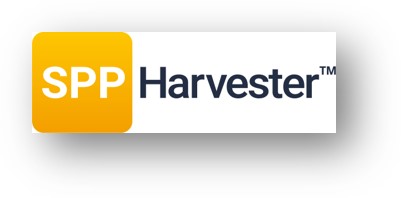4 types of stocks everyone needs to own
Posted by Andrew Main 04 May 2016 @ 9:00am

So you’re thinking of starting a portfolio, evaluating how your holdings have performed, or considering some portfolio spring cleaning?
Here are four types of stocks that every savvy investor should own for a balanced hand.
1. Growth stocks
These are the shares you buy for capital growth, rather than dividends. Growth stocks are essentially shares in those companies that are generating positive cash flows and whose earnings are expected to grow at an above-average rate relative to the market.
It’s worth remembering that some of the most successful firms in the US economy pay out relatively miserable dividends, such as Warren Buffett’s Berkshire Hathaway. If anything, they are the equivalent of a real estate investment. You buy and hold, riding the appreciating value of the asset. For the first few years you may not make much on the shares but if you hold onto them for long enough, and good quality managers avoid the pitfalls along the way, you’ll be well looked after when other investors hop on board at higher prices.
An example in Australia is CSL, the old Commonwealth Serum Laboratories. The shares are only yielding 1.62 per cent a year in terms of dividends but long term holders aren’t complaining. The former Government laboratories were privatised in 1994 at $2.30 a share and the shares have since gone up by a factor of more than 45 times. They broke through $100 in December and are now around $107 each.
It is lucrative, but it’s not easy: buying shares early in growth companies is the Holy Grail of investing and they are even harder to find when the stock market is booming.
In bull markets, you can go the way of identifying successful companies with strong growth prospects and calculating what you’d like to pay for their shares. Then wait for the inevitable market pullback that brings the share price to your range.
2. Dividend aka yield stocks
Yield stocks, ideally, are those that perform well in bull markets while providing partial downside protection for investors in bear markets. They are the stocks of choice for the income-seeking investor.
The stock yield is calculated by dividing the yearly dividends paid by the company to the company’s share price. For example, if a company is expected to pay out $0.50 in dividends over the next year and is currently trading at $20, the dividend yield is 2.5%.
It is because of their dividend yield that the four big banks and Telstra account for well over half of retail investors’ shareholdings in Australia. They have been sold down since late last year on the reasonable basis that the economic outlook outlook is not rosy, but they’re not going out of business any time soon.
ANZ’s weak half year profit result last week saw the six month dividend cut from 95c to 80c, but a recovery in the share price on Budget Day, the day after the result, to just under $25, meant that the shares are yielding 6.4 per cent. If you are retired and not paying tax, the dividend imputation system means that if you buy at these levels, you’re getting more than 8 per cent in your hand per year.
While of course the higher the yield, the better, savvy investors are also aware that the stability in the cash flows and the business are also important considerations when purchasing shares for income.
So, when buying for income – look for yield and look for stability in the core business.
3. New issues
Also known as Initial Public Offerings or IPOs, these are why the share market was created in the first place. These events mark the first time that companies make their shares available to the public. Once they’re listed on the share market, of course, any one can buy and sell but what is often lucrative is getting an allocation in the IPO before the shares list.
In times past, ordinary mortals found it hard to get access to those new floats unless the promoters were having trouble filling them. That’s changing now, thanks to technology, and the returns in recent times have been very good indeed. In 2015 IPOs returned 24 per cent on average.
We reported last week that investors in companies that have used our technology to buy the 25 mainly small companies we floated since they started in October 2013 would have found themselves ahead by significant amounts, particularly if they held on to the shares for a year.
We calculated that if they’d bought the full spread of 25 floats, investors would have been up
- 5.1% if they sold on the first day
- 9.3% if they sold at the end of the first month
- 30.6% if they sold at the end of the first 3 months, and
- 86.3% if they sold at the end of the first year.•
Because of the problem that ordinary investors had in the past to access these types of opportunities, this is still an ‘emerging’ asset class for most investors.
Here are some tips for all investors interested in investing IPOs.
But if you’re looking to craft a balanced portfolio, considering IPOs are now more readily available than every before, these results speak for themselves.
4. Defensive stocks
These are the shares that don’t go down so much when times are tough because they sell consumer staples. Typically, these types of stocks provide a constant dividend and report stable earnings regardless of the state of the share market as a whole.
Also known as non-cyclical stocks, these companies operate businesses that are not highly correlated with the economic cycle such as utilities, food, and (traditionally) oil. You don’t give up going to the supermarket, for instance, even in a recession.
Don’t expect dramatic growth or even big dividends from this portfolio segment, but it’s always worth having a few defensive shares.
Wesfarmers, which owns Coles, is a prime candidate and it’s worth noticing that the shares have traded between around $36 and $45 each for the last 12 months, making them an interesting prospect for the brave investor ready to take a few risks trading them as they move up and down. The yield comes out somewhere between growth and dividend stocks, at around 4.7 per cent. But again, a retiree would be able to beat that, thanks to the dividend imputation system that in some cases will actually see the holder being sent a refund for some of the tax paid by the company.
However, be careful not to overload on defensive stocks, even if you are risk averse: these companies typically provide basic needs and so can outperform during a bust, but will underperform during a boom.
All in all, a balanced portfolio is just that – balanced. A healthy mix of value accretive shares, income-generating holdings, new listings (IPOs), and non-cyclical stocks are likely to grow your nest egg when times are good and keep it well padded when times are tough.
5. Strategy or Stock Picking?
Finally, an observation on stock-picking. Its fun. As rousing on the wins, as it is deflating on the losses. But, at the end of the day, you are ultimately betting either that the market has mispriced the stock (and the market will come to agree with your opinion of hidden value), or that there will be sectorial rotation and your stock will be on the right-side of that rebalancing.
So, are ETF’s the answer? They certainly provide diversification. But, remember that nearly all of the largest, most recognisable ETFs are weighted on market capitalisation. So, you are effectively determining your allocations purely on size of company. And, I’ve yet to see evidence of a positive and enduring correlation between company size and performance. So, does it really make sense that size determine what you’re ultimately invested in? As they say, a rising tide lifts all boats, and that’s the beauty of ETF’s for some. Goes up, and choosing an ETF was a smart recommendation. Goes down, and ‘blame the market’. Still, not necessarily that good for investors that are simply focussed on risk-weighted outperformance on their investment.
So, what about investing with a successful fund manager? Hint: no study has found a correlation that demonstrates that previous outperformance is an indicator of future outperformance.
SPP HarvesterTM - Take a look.
An alternative is an event-driven strategy to systemically harvest the discount on capital raisings, made possible by the intersection of market practice and regulations to protect small investors.
